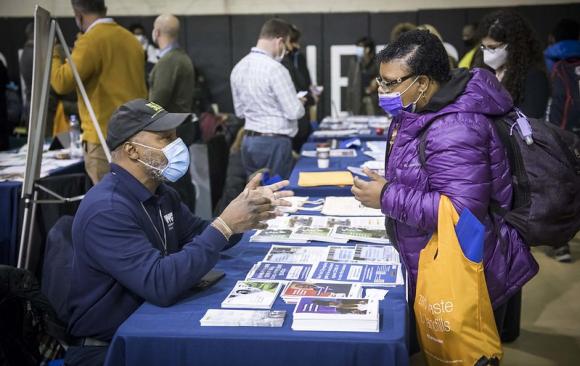


*Reposted from Gotham Gazette, written by Lachlan Hyatt*
As New York City government changes land use rules and invests in communities through rezonings, it should make workforce development a key piece of the equation, according to a new report recently released by the Center for an Urban Future and JobsFirstNYC, two non-profit organizations focused on equitable growth in the city. This is especially true, the report says, given the economic impacts of the pandemic, whereby the city is still down roughly 500,000 jobs.
“Rezonings, which by definition are places of concentrated public investment, are logical places where workforce investments at the forefront of the field can and should take place,” said Ben Margolis, executive director of Southwest Brooklyn Industrial Development Corporation, in the report.
The 26-page document, “Making Rezoning Work,” advocates for increased workforce investments in lower-income communities, particularly neighborhoods facing on-going or imminent rezoning efforts, which are typically focused on spurring housing growth, including affordable housing, but also often include a variety of other investments from schools to parks to transit and more.
“As New York City grapples with a protracted economic crisis brought on by COVID-19, city leaders will be searching for opportunities to help spark a lasting economic rebound and regain many of the nearly 500,000 jobs lost since March 2020,” reads the report’s introduction. “One option is to use zoning tools to encourage economic development, attracting private investment at a time when public funding is extremely limited and helping to revive the city’s battered economy.”
Since Mayor Bill de Blasio took office in 2014, the city has passed large residential rezoning projects in East New York, Downtown Far Rockaway, East Harlem, Inwood, Jerome Avenue in the Bronx, and Bay Street on Staten Island. The changes to the zoning rules in these areas typically allow for more and larger residential development, and trigger the city’s Mandatory Inclusionary Housing (MIH), which mandates around 25% of newly-developed units to be rent-regulated according to an affordability formula. Each rezoning, ultimately passed by the City Council after a lengthy approval process, is typically the product of a deal reached between the mayoral administration and local City Council member that includes a package of community benefits.
De Blasio has been criticized for only rezoning low-income communities of color and not investing enough in them, including related to local jobs, though that pattern is on the verge of changing as rezonings of Gowanus and Soho -- two whiter, wealthier areas -- appear near approval in the mayor’s final weeks in office.
In 2016, the Mayor’s Office launched a website of commitment trackers that allowed the public to keep track of rezoning efforts, promises, and follow-through.
For the full article visit: https://www.gothamgazette.com/city/10918-workforce-development-jobs-nei…